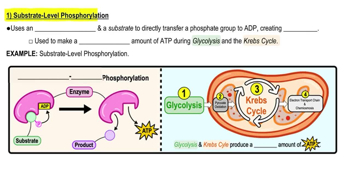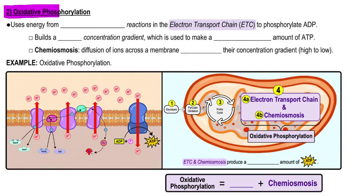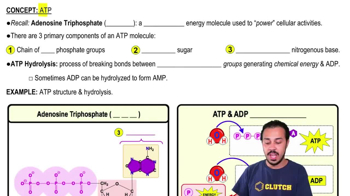Multiple Choice
How many molecules of ATP are gained by substrate-level phosphorylation from the complete breakdown of a single molecule of glucose in the presence of oxygen?
2449
views
 Verified step by step guidance
Verified step by step guidance



 1:06m
1:06mMaster Types of Phosphorylation with a bite sized video explanation from Bruce Bryan
Start learning